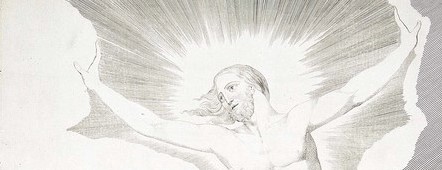What are the Digital Humanities?
Digital Humanities (DH) appear as a unifying discipline which draws together rapidly developing elements of traditional academia, modernisation of formal media, and their various interdisciplinary interactions as these manifest in terms of data and technology. Evolving from earlier iterations of computer technology – embodied in Father Roberto Busa’s use of punchcards in the 1950’s to catalogue the works of Thomas Aquinas – the field of DH has expanded to incorporate a multitude of disciplines and approaches, all linked through a shared pursuit of improving the quality and breadth of research and data.
The William Blake Archive
One such example of DH’s success is the William Blake Archive (WBA), which claims to comprise the most exhaustive and high quality collection of the poet’s graphic and written work. It purports to maintain a a level of photorealism and accuracy which cannot be found in even the most exhaustive print books. The archive uses an intricate approach to data, takes advantage of a wide network of museums and universities, and is supported by a long list of contributors working in various capacities.
Each image in the WBA contains metadata, which comprises its Image Information record. The II record combines technical data recorded in the Image Production record (a form detailing information on the digitisation of each separate image, kept as a hard copy) with bibliographic documentation of the image, with additional information relating specifically to provenance, current location, an the institution where it resides. The WBA uses metadata in a unique way, by inserting the above information into the portion of each image file reserved for metadata, thereby ensuring that relevant information travels with it, even when it is downloaded and shared. This also means that contributors to the archive must be especially attentive when registering such data, as this unique use of metadata means that errors in its cataloguing are difficult to remedy.
This is indeed an incredible feat, considering the sheer volume of images alone, and by extension the volume of data that must be parsed, organised, and amended for each image. Furthermore, the extensive list of contributors to the archive may pose a problem when it comes to processing this data and ensuring its veracity. However, the approach of the archive is deliberately geared towards ensuring that such problems are avoided, whilst maintaining the core principles of DH. As noted by Lauren Klein in Digital Humanities: The Expanded Field (2016), one of the core objectives of DH is an interdisciplinary approach, which as a matter of necessity implies a decentralisation of the discipline. Such an atittude is clearly embodied in the WBA, through their extensive staff and contributors, each bringing unique and discipline-specific approaches to the cataloguing of Blake’s work. These roles include multiple editors editors, project managers, bibliographers, technical and special project consultants, and assistants to each individual project, as well as an advisory board encompassing expertise from a wide range of professionals, from museum directors to university professors. In circumventing the potential limitations of such a decentralised approach when carried out at so large a scale (such as issues with accountability, lack of organisation, and poor oversight), the WBA provides an exhaustive list of all those who are currently or have at one point worked on it. Each role is explained in detail, and essential contacts are provided.
As Klein states, ‘This [interdisciplinarity] reflects a crucial decentering of the digital humanities, one that acknowledges how its methods and practices both influence and are influenced by other fields. Rather than diminish the impact of DH, however, these examples enrich its discourse and extend its reach.’ (Klein, 2016). In this sense, the WBA delivers an incredibly broad perspective on Blake, through collaborative expertise, cataloguing, data analysis, and engineering an effective user experience. Nonetheless, one may still pose criticisms of the archive, such as those raised by Matthew Gold and Laurein Klein, surrounding aspects of Blake’s work such as its eurocentrism, as well as the implications of academic approaches to his legacy, which will necessarily reflect Western atittudes to scholarship. Such an interrogation and criticism of the archive is still developing, and if done productively can serve to expand both the scope of the project itself, as well as the horizons of DH as a whole.
Works Cited
Klein, Lauren F. and Matthew K. Gold, Debates in the Digital Humanities 2016, Minneapolis, MN: Minneapolis University Press, 2016.
The William Blake Archive. www.blakearchive.org. Accessed 21 Jan. 2022.



